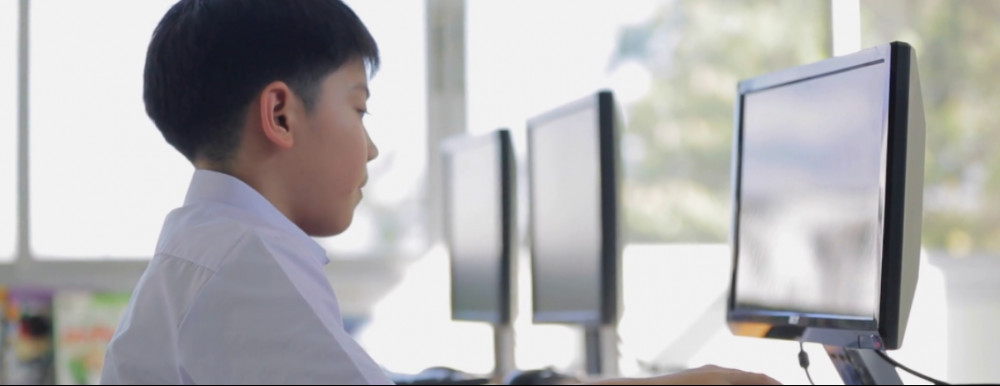What is Phonics?
Phonics refers to the sounds of a language and includes how sounds are pronounced, how syllables or words are stressed, and intonation. If students learn early on what sounds each letter or combination of letters makes, it may help them improve their reading, listening, and speaking skills.
In a nutshell, phonics is the study of how to read and write in an alphabetic language. Students must study the relationship between sounds and letters in order to do so. Starting with individual letter sounds is simple, but things become more complicated when you realize that each vowel has two distinct sounds and that some letters can be combined to create new sounds.
Teaching Phonics.
When talking with other ESL/EFL teachers, phonics tends to be a forgotten subject. Phonics is being taught much less or not at all in conventional ESL (English as a Second Language) classes. As a result, deciding whether or not to utilize phonics with pupils learning English can be tricky.
Though much of English adheres to phonetic norms, the exceptions can appear to be more frequent at times. Do the disadvantages of phonics outweigh the advantages?
Is phonetics a superior technique to teach reading and pronunciation? Or will it do more harm than good to ESL students? If you’re having trouble answering the phonics question, here are some of the benefits and drawbacks of phonics to think about while you answer it for yourself.

Benefits of Phonics.
Like most learning and teaching styles there are pros and cons to phonics. Here are some to consider before teaching.
ABC.
Students who are learning the English alphabet can benefit from phonics.
When learning English, Vietnamese students face an additional obstacle. The Vietnamese language is a tonal language with six distinct tones. Learning a new alphabet and the sounds that go with it can be tough for a Vietnamese ESL/EFL learner.
Phonics can be quite beneficial to these students. Students learn the sounds that each letter or combination of letters produces, which aids them in reading and pronouncing new words.
Spelling.
It can also help the students in spelling. Breaking down the components of a word into phonetically understandable sounds helps the students become better spellers. The student will recognize the sound as it corresponds to the letters.
Different Words.
Students who utilize phonics are generally better at pronouncing unknown or unfamiliar words. They will attempt the sounds that they have learned in relation to the letters that they see.
Confidence.
In the 15 years, I have been teaching in Vietnam I have seen the difference between those students who use phonics to sound out a word and those that don’t. If nothing else, the confidence attributed to the students who use phonics is much higher than those that don’t.
The Downside of Phonics.
Comprehension.
ESL pupils who excel at phonics may develop into so-called false readers. When they encounter a written article, they may be able to read aloud and pronounce new and unfamiliar words with ease.
However, they may have problems with comprehension. They can read what is on the page and because it sounds ok they will be held to have understood what they read. But in reality, while they can pronounce the words correctly they have little understanding of what the word, phrase, or article means.
Extra Work.
You as the teacher must put in a lot of effort when teaching phonics. You must continually name and point out letter patterns in words, assisting your students in recognizing and remembering them. If you teach phonics, it will become a part of every day’s material, as well as each class. You’ll have to show your students the phonic breakdown of every new vocabulary word they acquire until they can do it on their own. And depending on age and skill level this may take from 1 to 2 years.
Your Choice.
For ESL students, phonics provides substantial benefits as well as drawbacks, and each instructor must determine whether or not to utilize it in the classroom. In the end, no single approach will be sufficient to teach your ESL students correct English usage.
The majority of ESL teachers, that I know, believe that a balanced approach is beneficial for their students. It’s up to you how you implement phonics into your classroom, or even if you want to. So, if you want to teach phonics, here we go.

Let’s Teach Phonics.
Teaching phonics to ESL students involves four steps. These can be broken down into, learning the letter sounds, learning to write letters, blending sounds, and segmenting sounds. Twinkl is a great resource and I have used them on numerous occasions.
Step 1:
Learning sounds. Students need to learn the sounds and the letters that match them, both uppercase and lowercase (it’s best to start with uppercase), as well as the sound that can be made by joining two letters together. I would recommend spending more time on similar sounds and letters. The letters ‘d’ and ‘b’ for example, can be hard for ESL students to learn.
Step 2:
Blending sounds. Once the students know the sounds that each letter makes, they need to know how to put these together to read words. So, they see the individual sounds ‘d’ ‘o’ and ‘g’, but they need to put those sounds together to read ‘dog.’ This can be really tricky for some students, and others will learn quicker than others.
Step 3:
Segmenting Sounds. This is the reverse of blending; students must learn to break down the words they hear into their individual sounds. They should hear the word ‘pig’ and break that down into the sound’s ‘p’ ‘ai’ and ‘g’. This is how students learn to spell.
Step 4:
Sight words. These are words that often appear in the English language (think ‘and’, ‘on’ or ‘it’). These are words that students should learn to recognize on sight. Mastering these will significantly speed up the progress of reading.
Twinkl.
Source; Twinkl.
Resources;
You will find a large range of resources online, with Twinkl being but one of many businesses that can help you as a teacher. I have done 2 posts about online teachers’ tools that will help in the classroom. “On-Line Teachers Tools”

And, “The Top 10 Websites for ESL Teachers”
MES English, which you will find in the above list has a comprehensive range of materials that cover phonics. They are one of my go-to’s for English worksheets, but there are many online to choose from.
Why It’s Important to Teach Phonics.
Phonics helps with pronunciation. Have you ever played the game, ship, sheep, or shop and seen the mystified looks on your students’ faces? Unless you have been taught phonics the sounds of these words to many students may sound the same.
The ship, sheep shop game is a listening game where you as the teacher start and you have to say the words, and the students write down what they have heard. It becomes more interesting when it becomes the student’s turn to be the “teacher”
Use words with the same vowel sounds but different consonant clusters.
There is a lot more to the game as you add the “extras”. For example, you may ask “where did you see the ship?” The students may mishear the question and answer, “I saw the ship on the farm”. Great for listening and comprehension.
And can be a lot of fun at the same time.
Conclusion.
The purpose of learning English is for the learner to be able to effectively communicate with other people around the world in a meaningful and realistic way.
No matter what level your pupils are at, no matter how advanced or fluent they are, if they pronounce certain essential sounds incorrectly, other English speakers will misunderstand them. And that is where phonetics comes into play and what it is all about.
It is up to you as a teacher if you want to use Phonics as one of the tools in your arsenal of teaching weapons to help your students.
However, there are potential drawbacks as discussed, but in my opinion, it is yet another tool that can be used to help English literacy.
Who Am I?.
My name is Stephen and I have been teaching ESL/EFL for the past 15 years in Vietnam. I have traveled and worked extensively around this wonderful country and find myself still being amazed and frustrated, quite often at the same time.
Vietnamese students are generally hardworking and respectful to the teacher. And most schools are professional in the development of their students. However like anywhere there are always exceptions to the rule.
If you ever consider becoming an English teacher in Vietnam, leave me a message and I will help you achieve your goal.
Any or all links on this site may be affiliate links, and if you purchase something through those links I will make a small commission on them.
There will be no extra cost to you and at times due to my affiliation, you could actually save money.
You can read our full affiliate disclosure here.














